For most SaaS companies, the reasons to start content marketing are beyond compelling. For instance:
- On average, content marketing costs 62% less than traditional marketing, yet generates around 3x more leads
- SaaS companies that use content marketing see 30% higher growth rates and 5-10% higher retention rates
- The customer acquisition cost (CAC) of SaaS companies from content marketing is about 15% lower than that of paid ads
- 20% of the average person's time spent online is now used to browse content
In this article, we’ll show you step-by-step how to create your own killer SaaS content marketing strategy, including all the tactics, methods, and tools you’ll need.
Let’s go!
How Does Content Marketing Differ for SaaS Companies?
Unlike traditional companies whose main aim is usually to get a sale, most SaaS companies use content marketing to differentiate themselves from their competitors and attract trial subscriptions or demo sign-ups.
As the SaaS space gets increasingly competitive, software is becoming less differentiated by features alone and consumers are placing higher importance on branding, positioning and content when deciding which software to choose.
What’s more, SaaS companies do not sell their software for a one-time purchase fee. Instead, they operate on a recurring revenue basis, which means that they must constantly keep their users engaged in order to prevent churn and decreased MRR.
As such, content marketing for SaaS companies is not solely about attracting new users, but can also be used to retain existing users and even upsell them to higher plans.
Dive Deeper:
* How to Create a High-Performance Content Marketing Strategy in 2020
* 22 Brands with the Best Content Marketing Campaigns
* SaaS Marketing Strategy: 12 Killer Ideas to Grow Your Company
A Step-by-Step Guide to Creating a Killer SaaS Content Marketing Strategy
Creating great content is only one part of a winning formula. To see long-term success, however, you must first take the time to create a content marketing strategy. Why is a strategy so important?
Common pitfalls that can occur without a SaaS content marketing strategy:
- Lower content engagement and reach. Not only will you put yourself at risk of producing content that no-one cares about, but without creating a promotional strategy to decide how you’ll attract people to your content, you’ll reach a far smaller audience and your content marketing results will suffer.
- Delays, inefficiencies and rising costs. With a strategy in place, your SaaS content marketing will run like a well-oiled machine, with defined costs, deadlines and expectations for each part of the process. Without it, content will be produced inconsistently and coordination between different people in the process will be inefficient, which naturally will lead to delays and rising costs.
- Lack of management buy-in leading to budget cuts. One of the most important things to realize about SaaS content marketing is that it’s a long-term strategy that’s unlikely to yield instant results. Therefore, in order to be successful, every relevant stakeholder within the company must truly believe in it. Otherwise, if you aren’t able to demonstrate any tangible results within the first few months, but others can see that you’re investing a lot of money into it, you could experience internal pressure to stop. However, by creating a killer strategy first, you can share it and get buy-in from others within the company to (hopefully) prevent this from happening.
- Inability to measure success. If you never define what your goals are or what represents a successful outcome, you won’t be able to objectively measure how well your content marketing efforts are performing. Specifically, when it comes to SaaS content marketing, tracking, attributing and measuring results is far trickier than most other companies who have the goal of gaining sales.
Step 1 – Evaluate Whether Content Marketing Is a Good Fit for Your SaaS Business
Everyone has limited time, money and resources, so before committing to content marketing, you should step back and evaluate if it’s the right focus for your SaaS company.
Below is a list of clues to help you evaluate whether content marketing is a good fit for your SaaS business. If you find yourself nodding in agreement to a few of these, then take that as a sign to start creating!
A) Your customers have a few pain points for which they typically Google the answer
Take the very competitive email marketing industry. There are numerous pain points involved in sending emails, including issues of deliverability, technical woes of verifying your domain, and GDPR compliance.
Unsurprisingly, a quick check on Google Keyword Planner shows that many people are searching for ways to solve these problems. For example, the phrase “email deliverability” receives between 1K-10K searches per month.
All of this could mean that there's a good opportunity for SaaS email marketing companies to create relevant content with high buyer intent.
Dive Deeper: 7 Creative Ways to Collect Emails Without Being Spammy
B) You operate in an industry where things change quickly
One example of a fast-paced industry is e-commerce. Most software in this space is designed to provide tools to eBay, Amazon or Shopify sellers to help them automate their business.
The problem is, these marketplaces often introduce changes with little notice, and the software companies are forced to adapt their software accordingly. To help deal with this, companies such as Helium 10 invest heavily in content marketing, producing near-daily blog articles to educate their users:
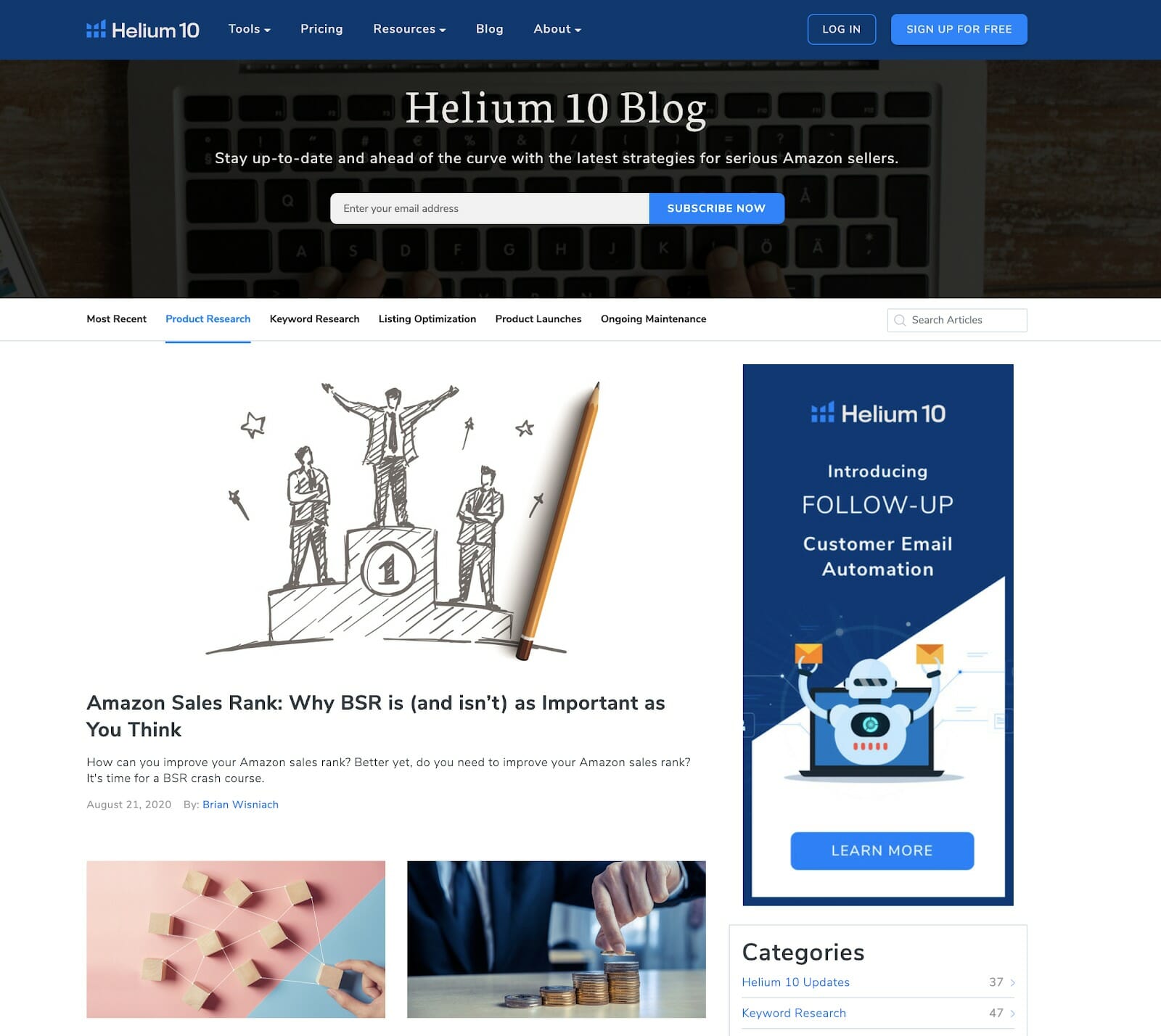
Dive Deeper: How to Set Up Your E-commerce Product Page for Maximum Conversions
C) You have existing promotional assets that you can leverage
If you already have some promotional assets that you can leverage to share your content, then your content marketing efforts will be much easier.
For example, HubSpot has a private Facebook group with over 17,000 members. This means that every time they release new content, they can easily create a post and promote it to all these members with very little effort:
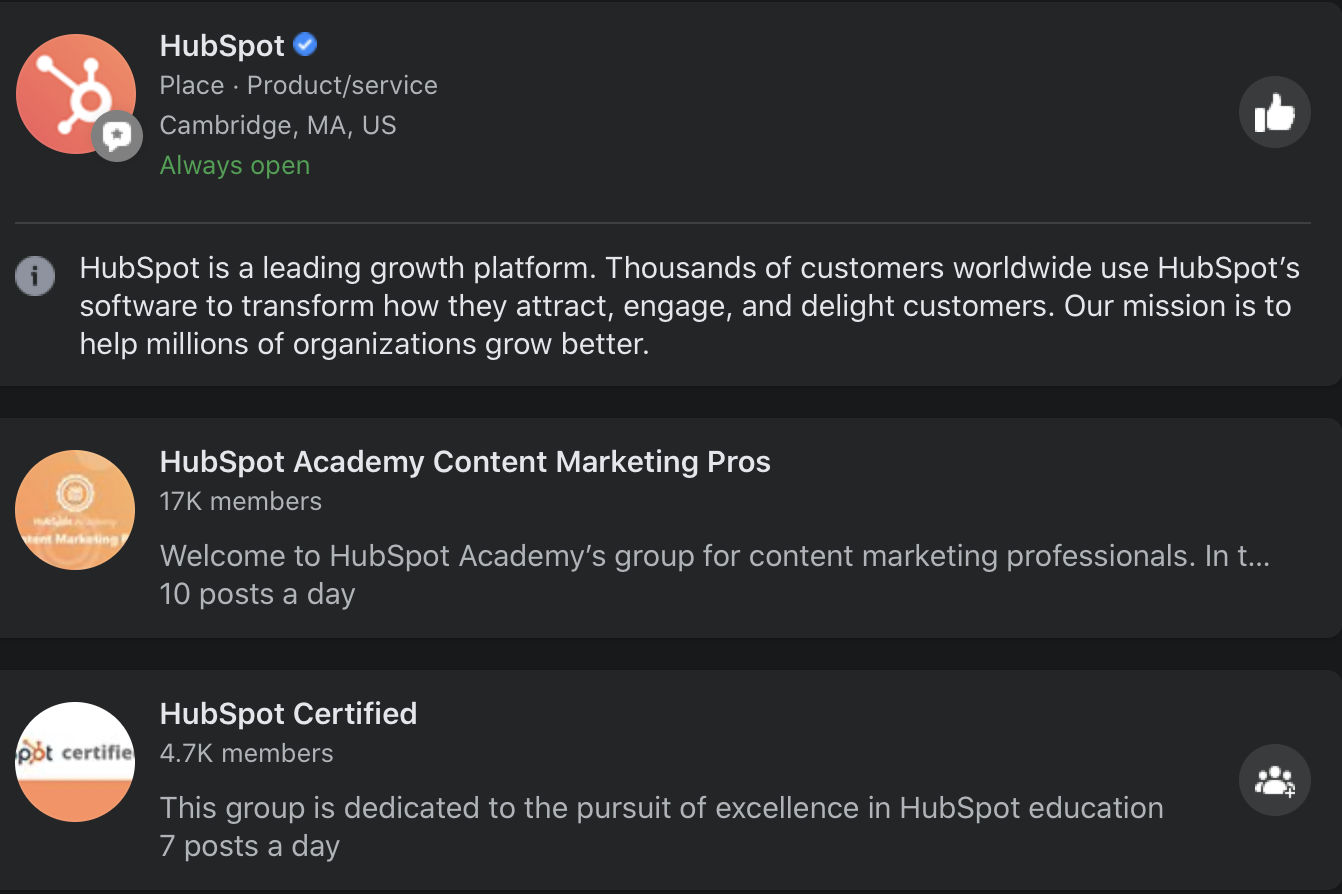
You don’t have to have a Facebook group. Instead, you may have a large email list, an engaged social media following, or a strong relationship with a key influencer – anything that could help you to promote your content to a relevant audience once it’s published.
Dive Deeper: 12 High-Performing Facebook Group Engagement Tactics
D) Your target customers are ‘knowledge-hungry’
A good example of this are CRM companies like Pipedrive that target salespeople.
Salespeople have highly pressurized jobs because they’re held accountable for how many deals they close and the revenue they bring to the company. As such, these are the types of people that are always looking to learn how to become better at their jobs and learn new sales methodologies.
Pipedrive has capitalized on this by launching a blog with how-to guides, templates and scripts specifically for sales reps. And once the salespeople see great value from the content, the hope is that they’ll sign up for the software too!
Dive Deeper: 30 Ways to Come Up with Great Ideas for Your Blog Posts
E) Your software is complex without tutorials and education
Accounting software companies like FreeAgent help small businesses and freelancers to file their tax returns. The problem is, most of their target demographic aren’t tax experts, hence, the company creates useful content to keep them up to date with tax changes and help them to understand new features.
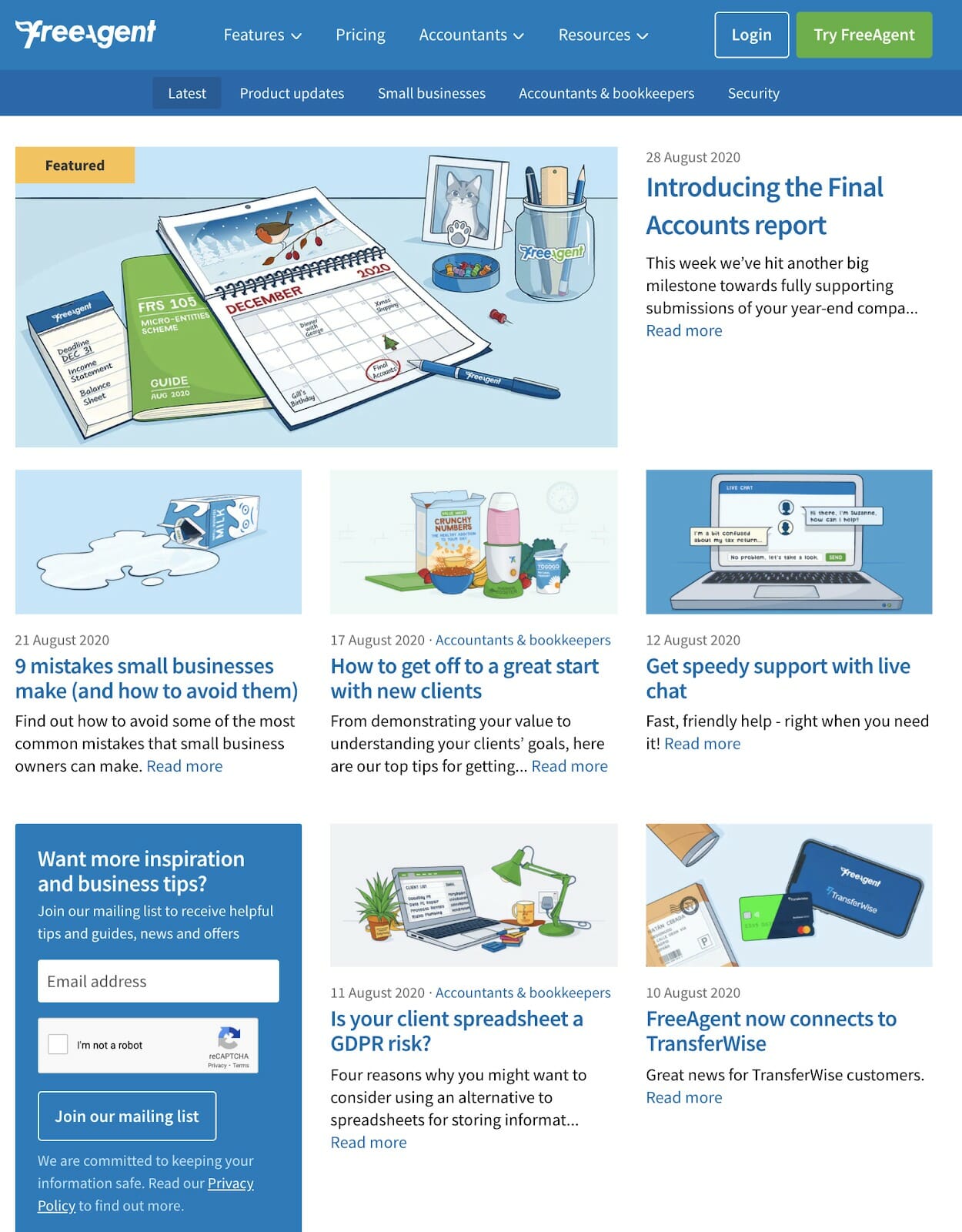
F) Customers have no pre-existing brand loyalty when making their buying decision
Imagine that your Google Ads budget is spiraling out of control due to click-fraud, and you’re looking for some software to solve the problem. There’s a very high probability that you go to Google, type in “click fraud software” and open the tabs of the first few results:
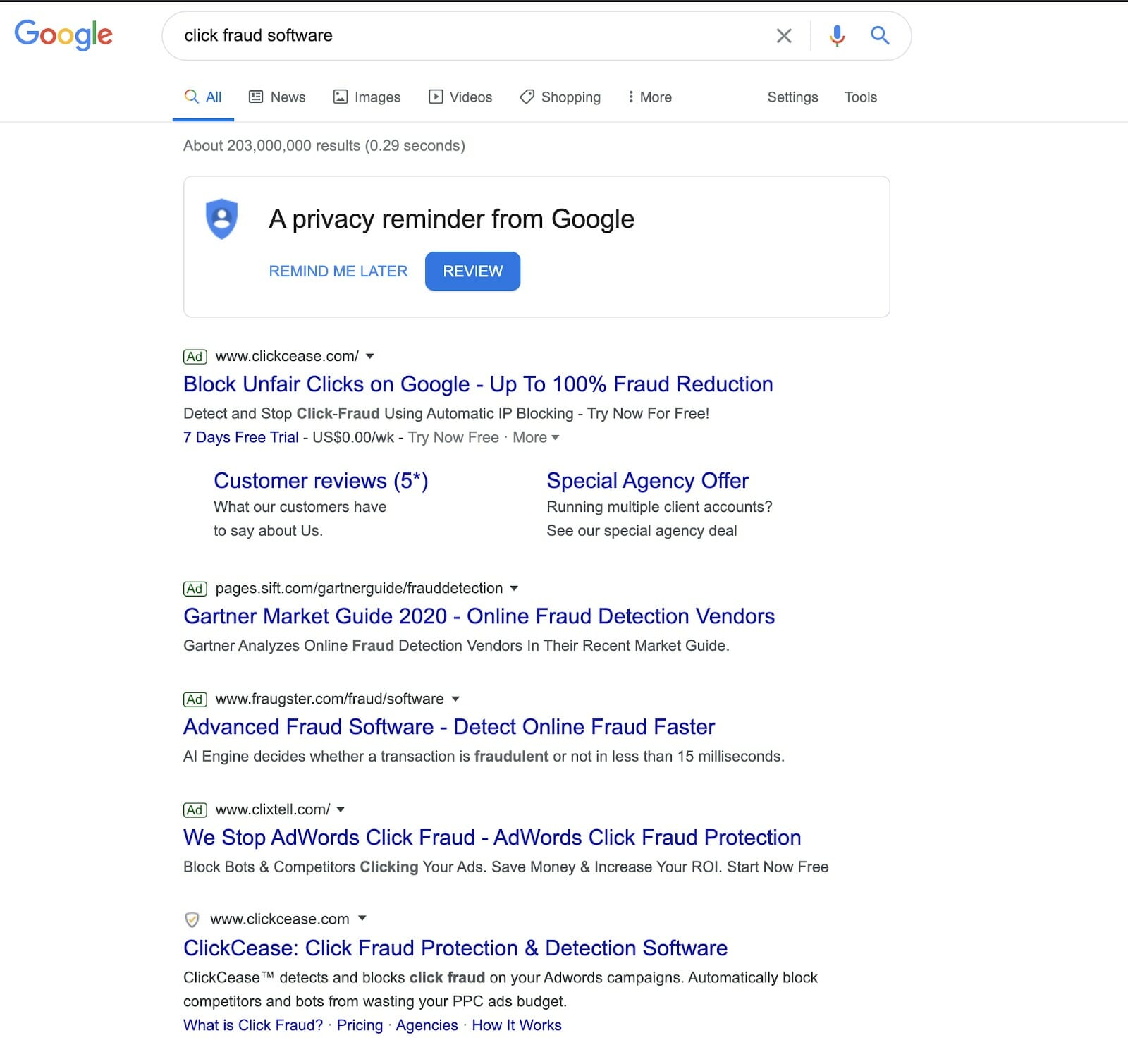
In a situation like this, customers are unlikely to be brand loyal because they’re probably not even aware of the software companies serving this need. Therefore, content can be a great way to differentiate your SaaS product from competitors and reach potential new users first.
G) A reasonable % of your website traffic comes from search engines
You may have already seen from a previously published SaaS SEO guide that Google is generally the biggest source of traffic for SaaS companies, driving up to 77% of visitors.
If you operate a SaaS company that likewise sees a large percentage of high-quality traffic from search engines, then this is a great indication that creating content could lead to more new user sign-ups.
Dive Deeper: The Anatomy of an Effective SaaS Lead Generation Strategy
H) You have a marketing budget that can sustain producing and promoting content for the long-term
A good SaaS content marketing strategy requires regularly creating new articles and having a reasonable content marketing budget.
If you’re unsure if you have the resources to sustain your content marketing efforts for at least one year, then it may not be right for you. (Later on in step 5, you’ll learn how to calculate the budget required to sustain your content marketing strategy.)
Dive Deeper: Content Strategy on a Budget: How to Grow Your Online Presence on a Shoestring
I) Your software is geared towards one main audience
If your SaaS company has one clear audience, it’s much easier to create highly targeted and relevant content. For example, Adobe Photoshop is a SaaS application aimed specifically at creatives, which gives them the advantage of their entire user base having very similar interests and needs.

On the other hand, a SaaS company like Calendly targets multiple audiences with wildly different needs, including marketers, educators, freelancers and job interviewers, which can make it much harder (though by no means impossible) to produce compelling content.
Dive Deeper: How Adobe Does SaaS Marketing: A Case Study
Step 2 – Decide on Your Main Goals and KPIs
Ultimately, every SaaS company wants to increase its revenue. However, there are a number of ways this can be achieved in the context of content marketing. The goal you choose will have a huge impact on every aspect of your overall content marketing strategy, from the type of content you produce to how often you produce it.
Below is a list of the most common content marketing goals and KPIs for SaaS companies – we advise choosing one goal only.
Goal 1: Increasing Your SEO Rankings
Indicators that this may be the right goal for your SaaS:
- Your conversion rate from organic traffic is highest amongst your acquisition channels
- Your target customers often search for information about desires/pains that relate to your software
- Your competitors rank higher than you for most common customer searches
- Producing better content and ranking higher than your competitors is realistic based on your budget
- You are too reliant on paid ads for user acquisition (particularly if your CAC is rising)
Most common KPIs to measure the success of an SEO-focused SaaS content marketing strategy:
- The number of keywords you rank for
- Your specific ranking for those keywords
- Website traffic from search engines
- Number of backlinks pointing to your content
- Conversions from search engine traffic
Dive Deeper: 5 Reasons How SEO Benefits Your SaaS Business (+ SaaS SEO Strategy)
Goal 2: Increasing User Engagement
Indicators that this may be the right goal for your SaaS:
- User churn is a big issue (typically for SaaS, a churn rate above 5% is considered worrisome, though this varies depending on the specific industry)
- Your software operates in a space where users typically need educating (e.g. e-commerce SaaS – where software like JungleScout relies on helping new Amazon sellers but has a churn rate in excess of 80%)
- Customer feedback indicates that users are churning due to a lack of information
- Your LTV:CAC ratio is under 3:1 and therefore it may be more profitable to focus on retaining existing users as opposed to acquiring new ones
Most common KPIs to measure the success of an engagement-based strategy:
- Churn rate (%)
- Average user monthly session duration (% change)
- Daily Active Users/Monthly Active Users (%)
- The average number of logins per user per month (% change)
- Social engagement indicators such as comments, shares and likes
Goal 3: Increasing Brand Recognition
Indicators that this may be the right goal for your SaaS:
- You’re a newcomer to the field, competing against SaaS companies that have been operating for years
- You’re marketing your software to appeal to a new audience
- You have low market recognition amongst your target customers
- You have the budget to share your content widely using tactics such as paid ads and influencers
Most common KPIs to measure the success of a content marketing strategy based on increasing brand recognition:
- Site traffic/number of visitors
- Social engagement indicators, such as comments, views, shares and likes (you can track social media activity using tools such as Mention)
Goal 4: Capturing Lead Information (Including Emails)
Indicators that this may be the right goal for your SaaS:
- Your main website conversion goal is for users to sign up for a product demo instead of a trial
- You sell high-value or enterprise software where multiple stakeholders are involved in buying decisions
- Users normally require nurturing or educating before deciding to join
Most common KPIs to measure the success of a content marketing strategy based on capturing lead information:
- New leads/demo sign-ups
- Lead magnet downloads
Goal 5: Attracting New Users (Trial or Paid)
Indicators that this may be the right goal for your SaaS:
- User acquisition is your greatest challenge (as opposed to retention or monetization)
- You have a healthy churn rate for your industry (typically below 5%)
- You have an above-average SaaS website conversion rate
- There are indications that content is a big factor in the purchasing decisions of potential users (you can check your own customer feedback or reviews on websites like Trustpilot to give you an idea)
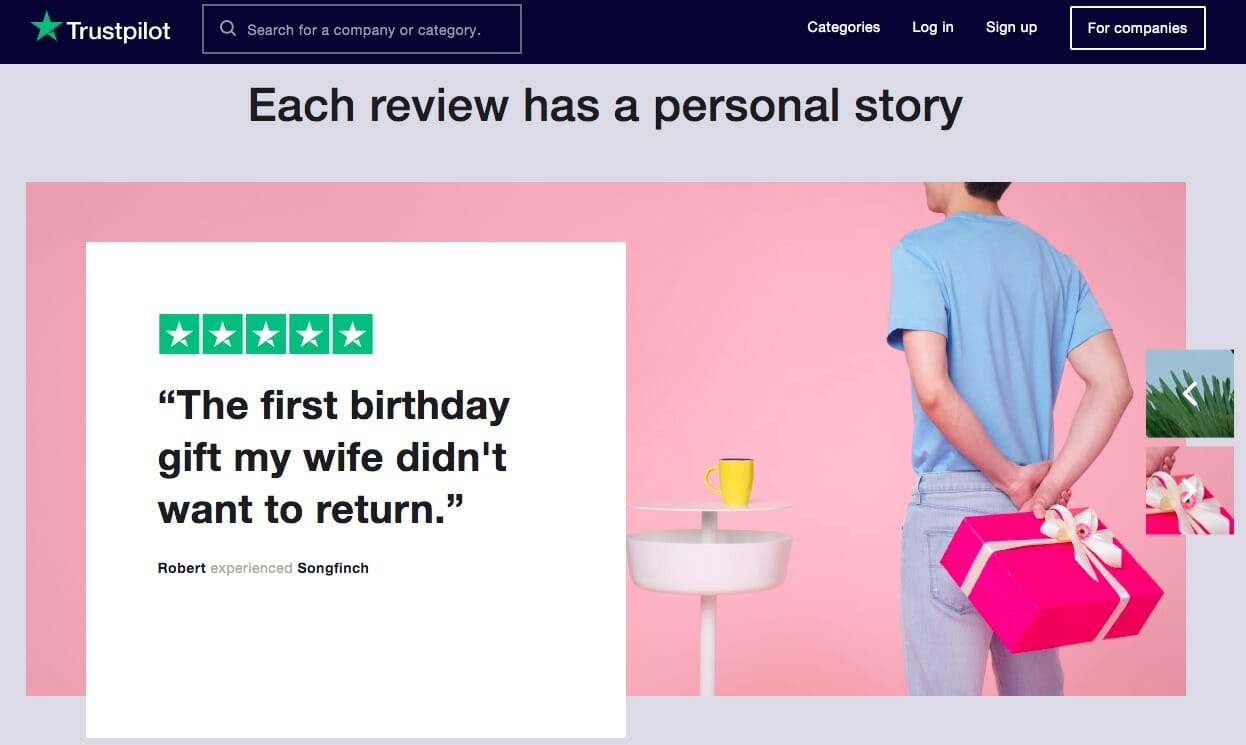
Most common KPIs to measure the success of a content marketing strategy based on attracting new users:
- Trial user sign-ups
- Paid user sign-ups
Step 3 – Decide on the Content that Best Fits Your Audience
There are so many types of content that you could choose to produce, including:
- Articles:
- Success stories
- How-to guides
- Ultimate guides
- E-books
- Case studies
- News
- Feature updates
- Videos
- Webinars
- Podcasts
- Online courses
- Infographics
The question is, how should you decide which type of content is right for your SaaS content marketing strategy? Consider the following three points.
Dive Deeper: What’s the Right Content for Each Stage of the Marketing Funnel?
A) Your Goals
Remember, your goal from step 2 of this guide should be influencing every decision you make from now on.
For example, if you chose to focus on increasing your SEO rankings, then creating a podcast is unlikely to be your highest priority. Instead, you’re more likely to be drawn to creating shareable content (to attract links), long-form articles with a high-word count, and basing your topics on their search volume and ranking difficulty.
If your goal is to increase your brand recognition, you may look at creating viral content that will be able to get the biggest engagement on social media channels.
In short, look to match your goal with the content that will best help you to achieve it.
B) Your Customers
If you’re not sure, ask your customers about what they prefer! Within 10 minutes, you can set up a Google Form survey with a short list of questions you’d like to know the answers to:
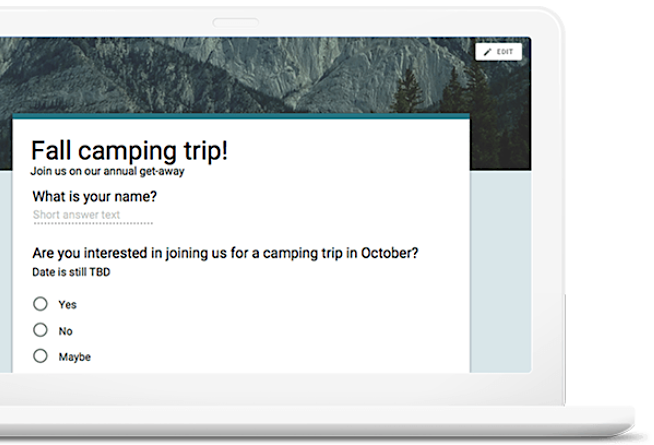
You can include questions such as:
- What other sites do you regularly visit for content?
- What type of content do you prefer?
- What are your main struggles with X?
- Would you prefer that we focused on X or Y?
- What most convinced you to join X?
Then, create a post or send an email along the lines of:
Hey [Name],
We’re looking to create useful content that helps you make the most out of [software product]. But we need your help to decide what we should focus on!
We’ve created a 3-minute survey with 4 quick questions – would you mind taking a second to fill it out here?
As a thank you, we’ll be giving away prizes, including [prize info] to a few of the best responses.
Thank you,
[Signature]
As you can see in the template above, you’re likely to get a better response rate by offering respondents a chance to win a prize for completing your survey. You don’t need to spend a fortune, but offering something small like a month’s free subscription to your software for a few lucky winners can help.
C) Your Competitors
You may think it's to your disadvantage if some of your competitors are already successfully engaged in content marketing. However, all it means is that you can learn what’s working for them, and what isn’t, and then avoid all the mistakes they’re making.
For example, let's say that the goal of your SaaS content marketing strategy is based on increasing user engagement. You could look at your competitors to see:
- Which of their videos have the most views?
- How many views are they getting on average?
- Which of their articles have the most shares or comments?
- What are readers saying in the comments?
- Which of their social media channels are getting the most engagement when promoting their content?
- Which types of content seem to be performing best for them?
The same concept applies regardless of your content marketing goal. If, for instance, your goal is to increase your SEO rankings, you can follow this guide to discover your competitor’s SEO strategy and get insights about their campaign before you start your own.
Dive Deeper: How to Perform Marketing Competitor Analysis (+ 6 Best Tools Comparison)
Step 4 – Create a Promotional Strategy
Relatively speaking, it’s easy to create content. The much harder part is promoting it.
As we’ve talked about in articles before, influencers like Derek Halpern have famously said that while 20% of your time should be spent on content creation, 80% of it should be on content promotion.
Here are some of the main ways that you can promote your content:
A) Email Sequences
Most SaaS companies already have email sequences set up to engage new trial users, educate existing users or persuade people against leaving. Therefore, a very effective way to get more people to engage with your content is simply to add another email to your existing sequences.
For example, if your SaaS has a 14-day trial, you could add an email promoting one of your pieces of content to be sent on day 20, and then another on day 25 – that way, in the future, no one who goes through your trial will miss out on all the great content you’ve been producing.
B) Email Blasts
If you have an existing email list, you can write an email to promote your content and blast it out to everyone (as long as you have permission to do so – GDPR alert!). Be aware that since the average email click-through rate for software companies is 2.45%, this is most effective when you have a large number of email addresses.
C) PPC Ads
If you don’t already have a large audience, but you do have a reasonable budget, then Pay-Per-Click ads could be the solution.
Google, Facebook, YouTube and LinkedIn are all very popular platforms for companies to promote their content. With Google Ads, you get the huge benefit of being at the top of the search results for any keywords you successfully bid for – without having to invest in SEO.
And with the other networks, you get extensive targeting options, including demographics and interests, that make sure your content is seen by the most relevant people.
D) Social Media
If you have an active and engaged following on a social media platform such as Facebook, Twitter, Instagram or LinkedIn, you may be able to promote your latest content releases. However, just be careful when making this decision that you avoid looking at vanity metrics like follower counts, and instead think about engagement.
For example, Moz, a well-known SEO software company, has over 556,000 followers on Twitter:
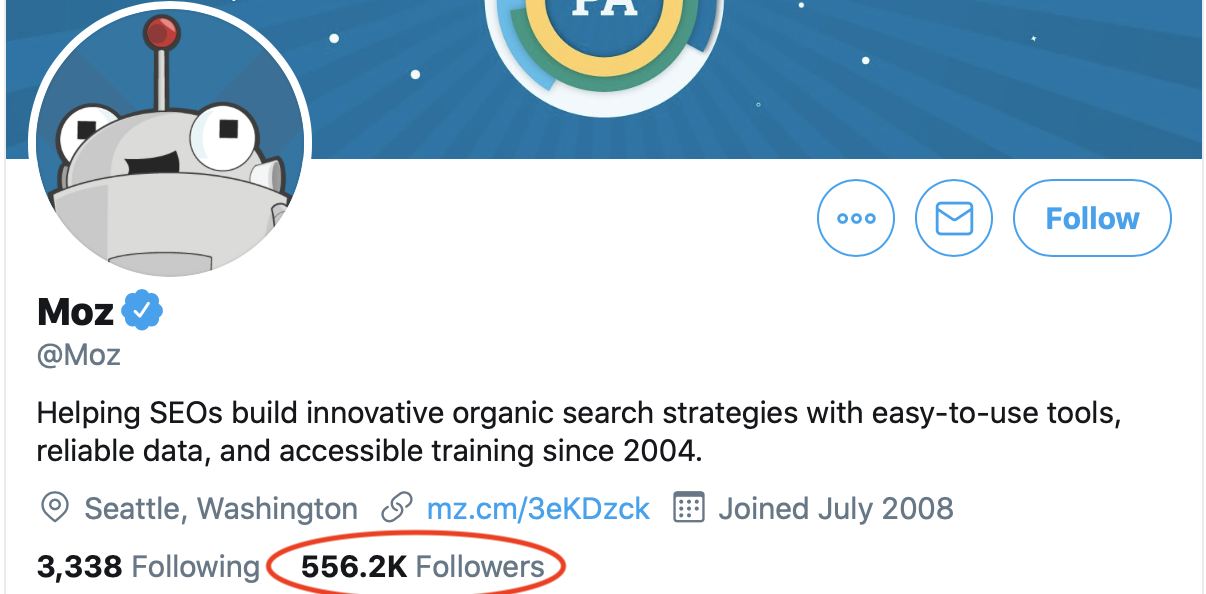
Yet, take a closer look and you may be surprised to see that most of their content only gets around 20-50 retweets. That means only around 0.0004% of followers are actively engaged with their content:
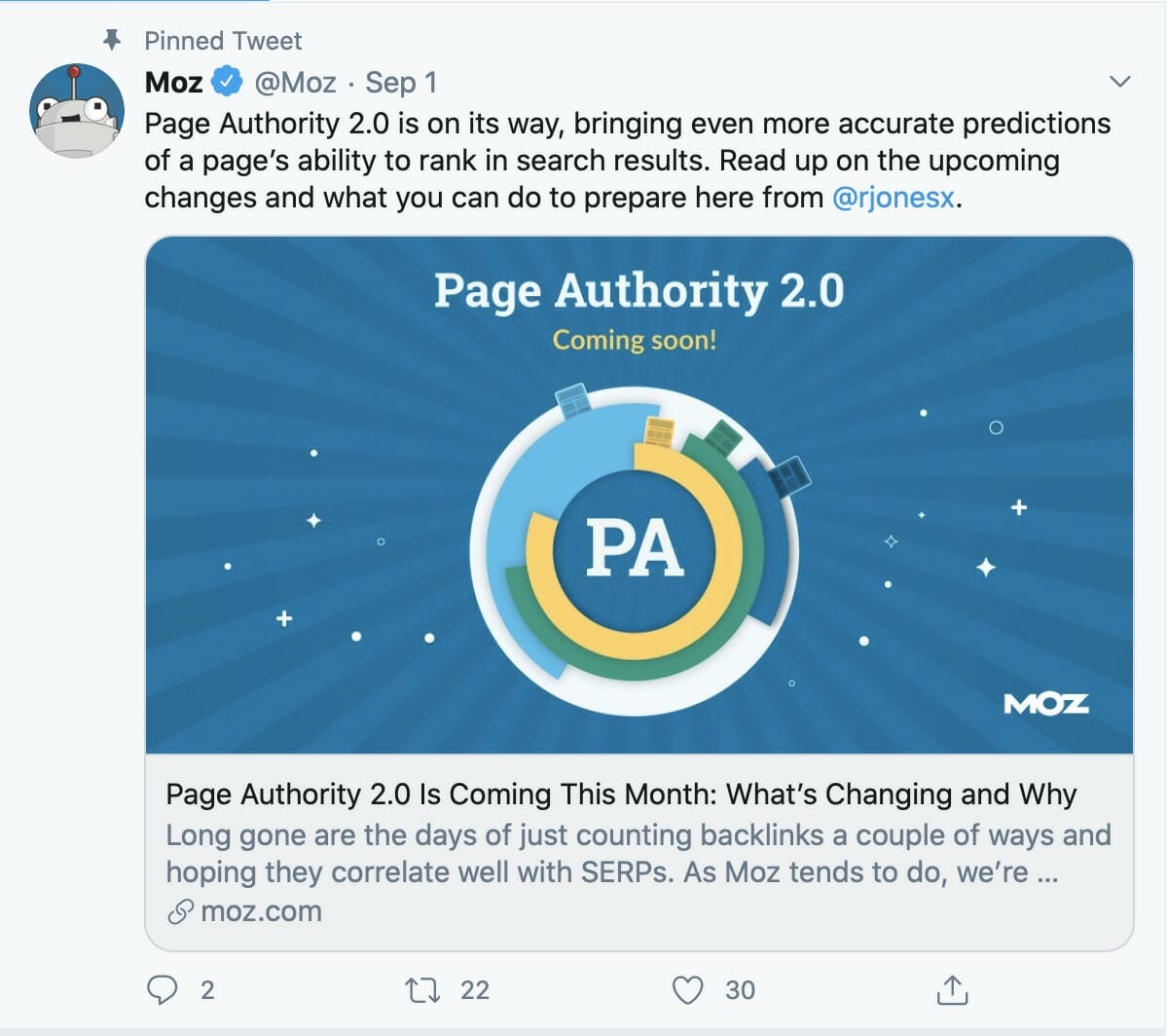
The moral of the story? Look at your social media engagement, not just your follower count. 👀
E) Forums, Communities and Groups
Depending on your industry, your target users may typically hang out in certain forums, Facebook groups or online communities, which make them ideal places to promote your content. If you aren’t sure where these places are, remember, you can ask this in your survey during step 3 of the plan.
If the community doesn’t belong to you, just be careful that your plan doesn’t backfire. Make sure to reach out to moderators and community owners for permission before posting anything, and try to genuinely engage with the community too. If the information in your content is genuinely useful and not a sales pitch then most groups are willing to let you share it.
F) Influencers
Partnering with influencers can help you to reach a much larger audience and build social proof for your content. You may even be able to get them to put your content on their own platform (e.g. post videos to their own YouTube channel) to get maximum outreach. A good idea in order to evaluate your options is to draw up a shortlist of some of the most interesting influencers in your industry. Then, when you find an influencer you want to reach out to, you can use this checklist to find someone’s email address. If you send cold emails to influencers, it’s likely that only a small percentage will actually respond to your initial email, so be sure to send multiple follow-up emails.
If you’re feeling a bit overwhelmed by the number of methods available to promote your content, don’t be. Instead, start off by thinking about what the easiest and most effective strategy would be for your company.
For example, if you have a list of 100,000 email addresses, but only 200 Facebook followers, it makes sense to pour more effort into email marketing. If you have an existing relationship with a key influencer in your industry, use it to your advantage.
Don’t be afraid to experiment. You can always try a few methods and adjust your strategy later depending on your results.
Dive Deeper:
* Social Media Marketing for Business Owners: How to Get Started in 2020
* The Ultimate Guide to Growing Your Business with Influencer Marketing
* Why Content Marketing Should Always Be 20% Creation and 80% Promotion
Step 5 – Estimate and Allocate Your Budget
Being able to estimate and allocate the budget required to match the ambitions of your SaaS content marketing strategy will be crucial to its long-term success.
You probably already have a good idea of the type of content that you’re looking to produce based on what’s best for your stated goal and audience. Now you just need to map out every stage of the production and promotion process.
The following is an example as if you were producing a YouTube video (and the same mapping concept can be used for any form of content):
- Define a topic idea
- Complete research for the video
- Create a script
- Record the video
- Edit the video
- Create a thumbnail
- Create a video description
- Upload the video
- Promotion methods:
- Write and send a promotional email
- Write and post social posts
After mapping out each stage, it’s time to:
- Decide who will be responsible for actioning each step
- Find out how long it will take them to complete each step
- Figure out how much it will cost for them to complete each step
For example, if you’re looking at the “edit the video” stage, it may look something like this:
- Allocated to Vinny, the video editor
- Will take 2 working days to edit each video
- Will cost a fixed rate of $1,000 per video
Lastly, add in the fixed costs of any additional software you may require.
Once you’ve done this for each stage, you should be able to estimate the total cost and time required to produce each piece of content. There are 2 main benefits to this:
- First, if you already know the budget that’s available to you, you can easily work out how regularly you can afford to produce content.
- Second, having a detailed financial plan will help you (if required) get buy-in and sign-off from others within your SaaS company.
Tools to Help with Content Marketing for SaaS
With the right tools, you can transform your content marketing into a slick operation. Below are my recommendations for which tools you should use for every part of the process:
Systemizing the Production Process
If you try to do content marketing without a project management system in place, there will be complete chaos. But by systemizing the production process you will:
- Ensure consistency in content production
- Be able to easily identify any bottlenecks in the process (What are we waiting for?)
- Cut down on unnecessary communication and calls from team member across different time zones
- Increase the accountability of team members for their part of the process
- Enforce content timescales and minimize delays
Even if you already have an internal project management tool for other projects, I’d suggest using a separate tool, specifically for your SaaS content marketing strategy.
Dive Deeper: How to Drive Effective Content Creation with Efficient Production Workflows
A) Trello
Trello is fantastic because it’s incredibly simple to use and you can try it for free. While there are many other tools specifically for content marketing, Trello is very easy for all team members to understand, and provides great features for tracking progress.
My recommendation is that you create a Trello board for each type of content (videos, articles, etc.), a list for each stage of the production process, and a card for each piece of content. As each piece of content passes through each stage of production, team members simply drag the card to the next list while adding any comments, deadlines and files.

B) CoSchedule
CoSchedule is a highly capable alternative that’s specifically designed for content marketing. It's potentially a better alternative for larger companies that are willing to pay between $19-$39 per month per user.
For smaller SaaS companies with large numbers of team members involved in the content production process, this may be prohibitively expensive compared to Trello.

Writing and SEO
A) Airstory
Unlike Microsoft Word or Google Docs, Airstory is built from the ground up for writing content, which means it has cool features like:
- Publish directly to WordPress
- Save research notes using the Chrome extension
- Time Travel back through previous versions of your document
- Borderless pages (because “you're not faxing your document to 1994”) and the ability to drag your notes onto the page
- Highlight text you've written and turn it into a note with one click, in case you want to save it for later
- Right click on a picture or highlight text anywhere on the web and send it back to your Airstory document
Best of all, it’s completely free for 97.4% of users.
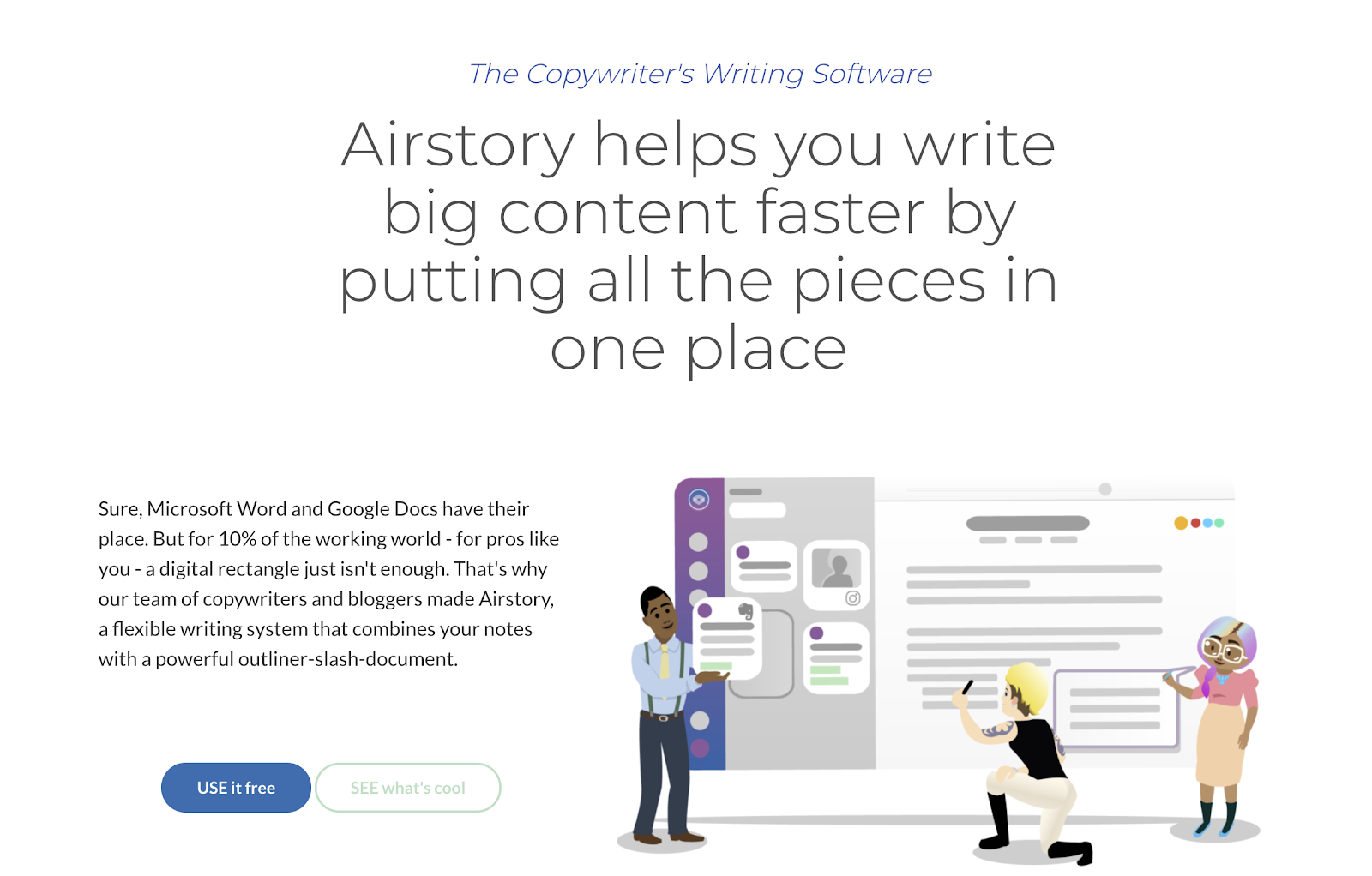
Other noteworthy alternatives to consider:
- Google Docs – A classic that isn’t going away anytime soon. It’s free to use and easy to collaborate and share docs with others, but the main drawback is that it was built for general users rather than for copywriters, so it lacks a few of the useful features of Airstory.
- Grammarly – A fantastic tool for correcting basic spelling and grammatical errors. With the premium version, you also get more advanced suggestions for sprucing up your copy.
- Writer – An enterprise tool similar to Grammarly. The difference here is that Writer allows you to upload brand and writing style guidelines so that your content maintains a consistent voice regardless of who’s writing it.
- Yoast – If your SaaS content marketing strategy is built around improving your SEO performance, then you need Yoast. Yoast’s WordPress SEO plugin provides automatic suggestions for optimizing your content to rank better in search engines. Upgrade to the premium version for $89/year and never look back.
Tracking Results
Tracking and attributing results from content marketing will depend on which goal you’ve chosen. As such, you may not need all these tools, but here’s a rundown of the ones you should consider.
A) Google Campaign URL Builder
As you promote your content, you’ll need to be able to track where your traffic and sign ups come from in order to attribute them correctly.
Google's Campaign URL Builder is a free tool that helps you add UTM tags to your links so that you can track the sources and campaigns of your leads:
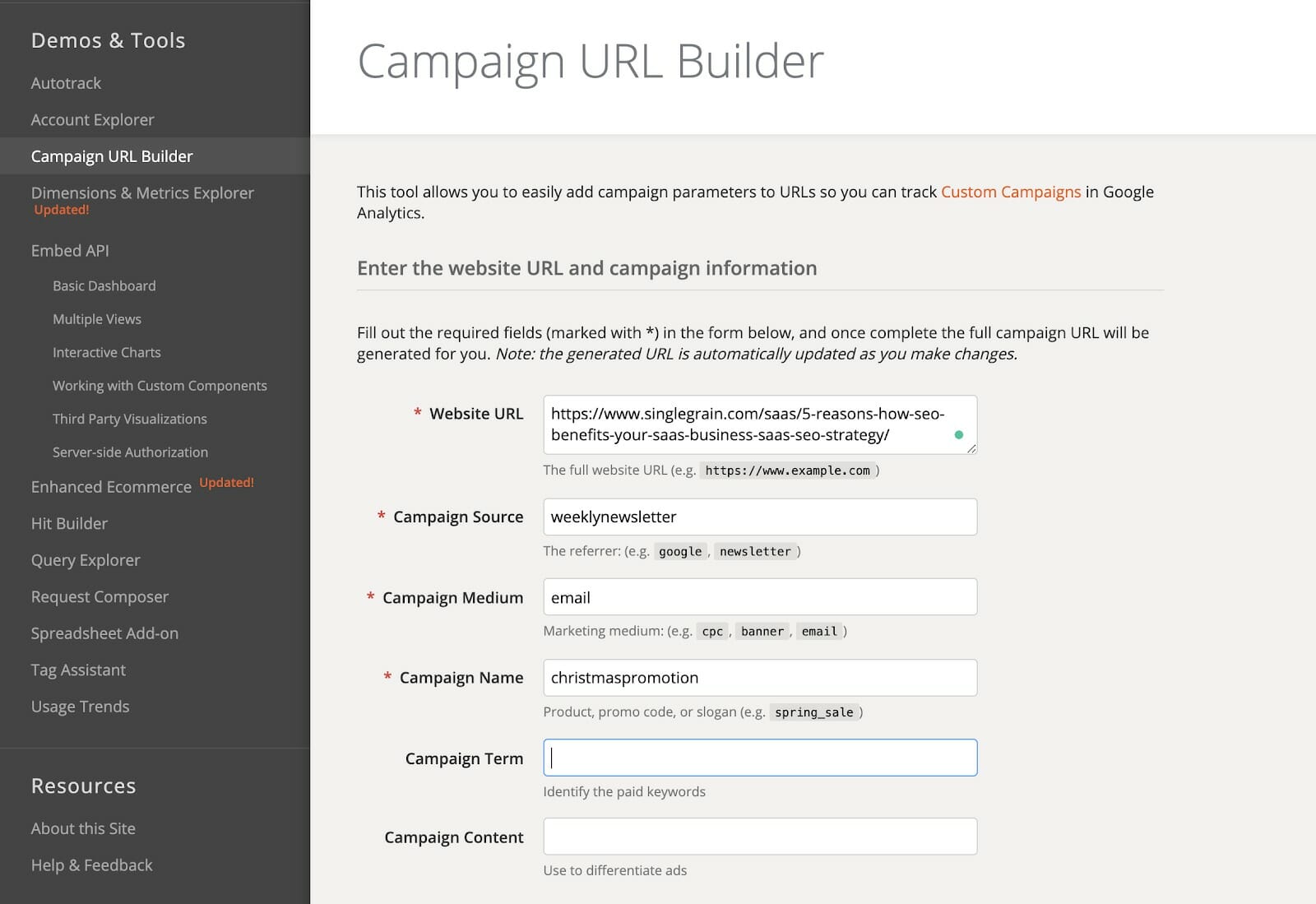
B) Google Analytics
Google Analytics is still hands-down the best and easiest way to analyze what’s happening on your website. Once set up, you can use it to track everything from traffic to sign-ups. Learn how to set up your goals and funnels in Google Analytics:
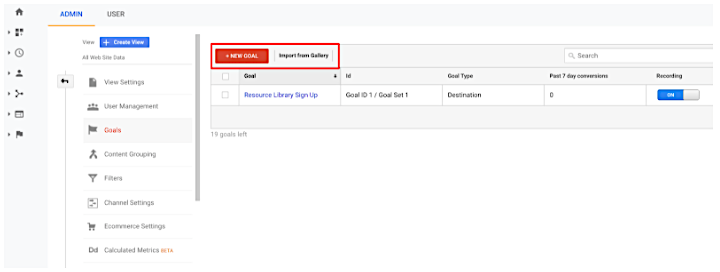
C) Pipedrive
You’ll need to use a CRM to capture the details of any leads that sign up as a direct result of your content.
Pipedrive is great at doing this for SaaS companies because not only does it store the UTM details of any sign-ups, it has an easy-to-use sales pipeline. What this means in practice is that you can track which of your sign-ups are free users or upgrades to a paid plan, as well as create filters to display all the leads that come from a specific article or promotional source – making performance reporting super easy.

D) Profitwell
Profitwell is the best tool for tracking advanced SaaS business metrics such as revenue, churn, user engagement and acquisition. And it's absolutely free to use.
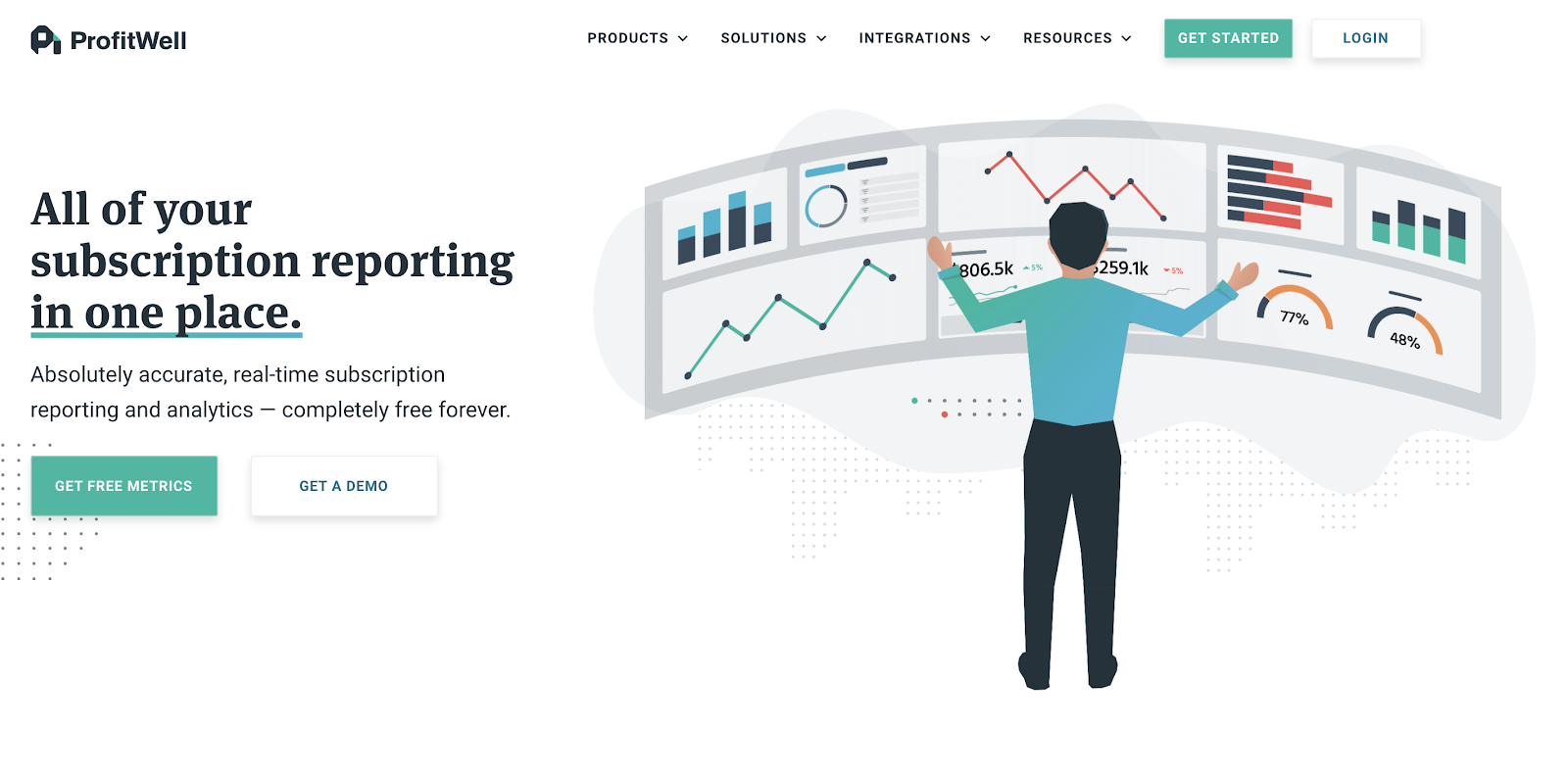
E) Mention
If the main goal of your SaaS content marketing strategy is to increase brand awareness, then consider using Mention. This tool helps you to monitor the web and social media for mentions of your brand, allowing you to see what’s being said and how your brand is being perceived.
Lastly, make sure to read our article on SaaS SEO to see the best ways to track the results of an SEO-focused content marketing strategy.
Content Promotion
A) Autopilot
If your SaaS company is already using an email marketing tool that you’re happy with, then stick with it for simplicity. If not, consider switching to Autopilot.
What makes Autopilot a great choice specifically for SaaS companies is the ease of use, advanced features, and the huge number of integrations. Yes, any email marketing software can send an email, but with Autopilot you can go much further. For example, you can sync your CRM, add tags in Intercom or add leads to your Facebook audience. Try it free for 30 days.
B) Buffer
Take the stress away from publishing promotional social media posts. Buffer can post for you on Facebook, Twitter, Instagram, LinkedIn and Pinterest – and analyze your campaigns, too.
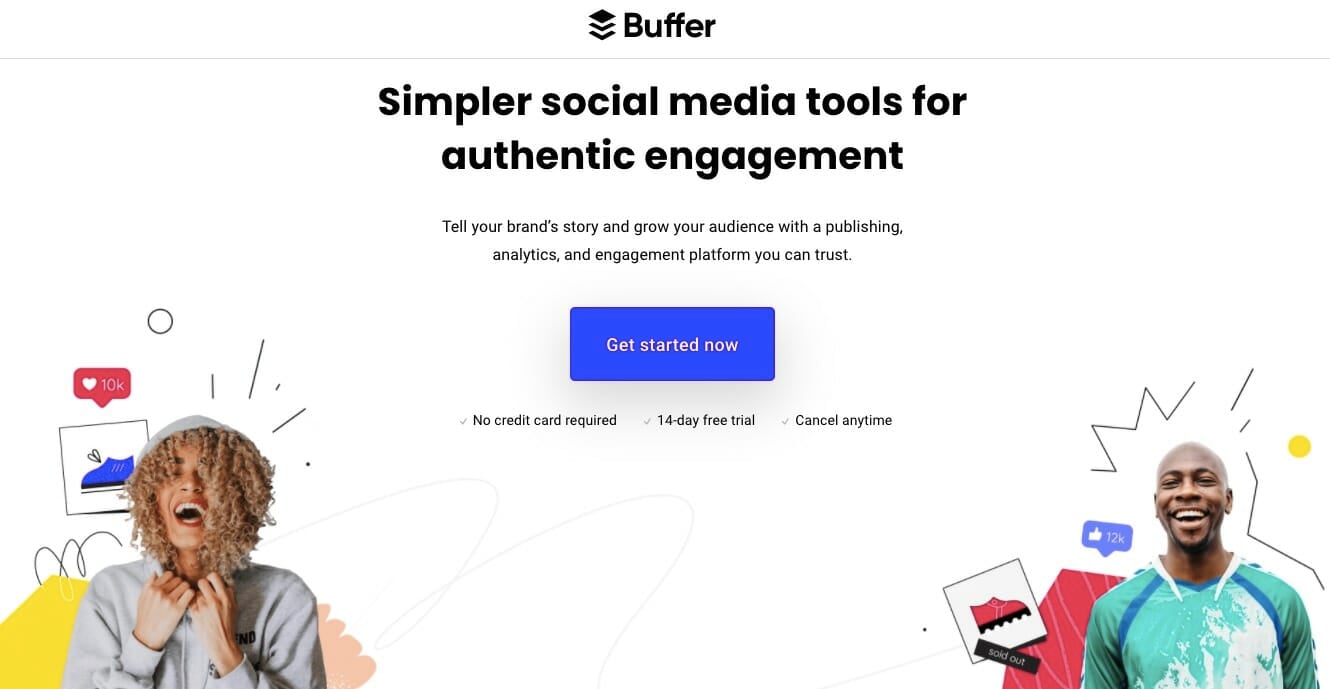
Examples of SaaS Companies with Great Content Marketing
Looking for some inspiration? Here are two examples of SaaS companies that have been successful with their content marketing efforts:
Chanty
Chanty is a SaaS application for team chat that competes against the big guns with big budgets like Slack and Microsoft Teams. However, instead of fearing their competitors, they used them to their advantage when it came to content marketing. Without the budget to compete at traditional marketing, Chanty set their main goal as getting sign-ups from content via organic search.
During their research, they realized that there were a number of high buyer intent keywords with a reasonable search volume that they could target around their competitors, such as “Slack alternatives,” “Microsoft Teams vs Slack” and “Slack competitors.” The Chanty content team then wrote a large number of detailed reviews and articles about their competitors, using their keywords!
The result? Thanks to content marketing, Chanty now has over 10,000 active users! They published the full inside story about their content marketing efforts here.
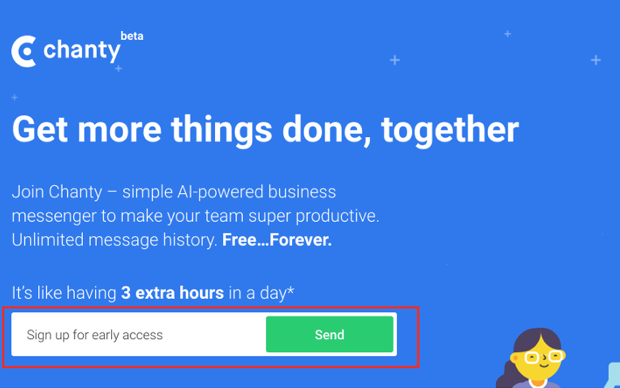
HubSpot
If you’re looking to create an SEO-based content marketing strategy, then HubSpot is a great example to follow.
This platform provides sales and marketing software, which is a very competitive niche, yet their strategy is incredibly simple – consistently create high quality content for all parts of the funnel, from TOFU articles such as “how to write a blog post”, to BOFU content like “how to use a CRM”.
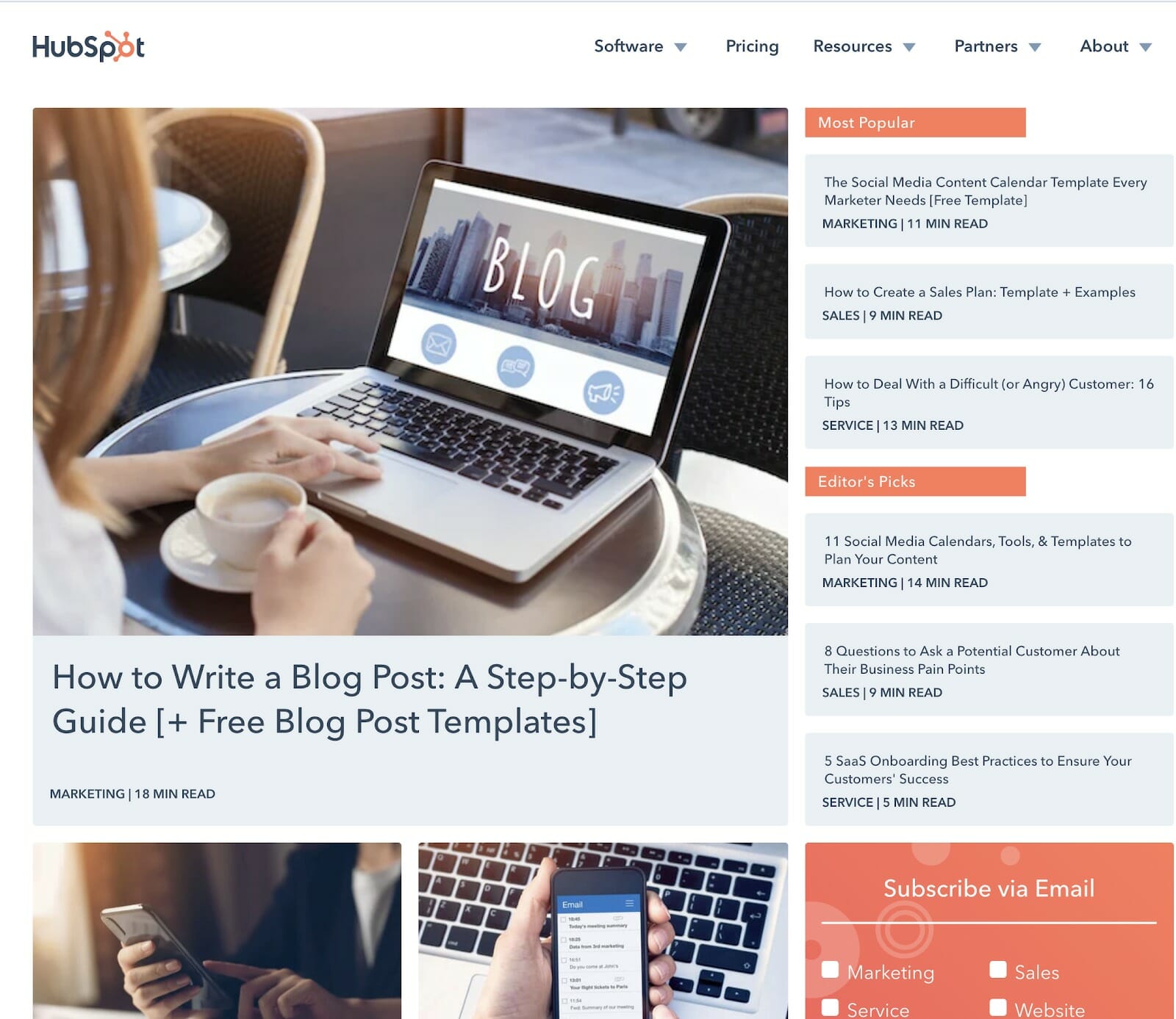
The idea behind this is one that can be replicated by most other SaaS companies: By focusing on content throughout the funnel, not only do they attract new users who are ready to buy now, but they also build long-term brand awareness from marketers who aren’t ready to buy yet, but may do so in the future.
As a result of this focus, HubSpot has managed to 3X their organic traffic in just under five years, and rank between #1-3 for nearly 13,000 keywords in organic search:

Final Thoughts on SaaS Content Marketing
With SaaS companies becoming less differentiated by features alone, content is becoming a major factor in users’ purchasing decisions. If you act now to build a long-term SaaS content marketing strategy, and you have the discipline to follow it, then you have the power to become the #1 software company in your industry. Best of luck!
The post How to Create a Killer SaaS Content Marketing Strategy appeared first on Single Grain.
from Single Grain https://ift.tt/3oUHtWE
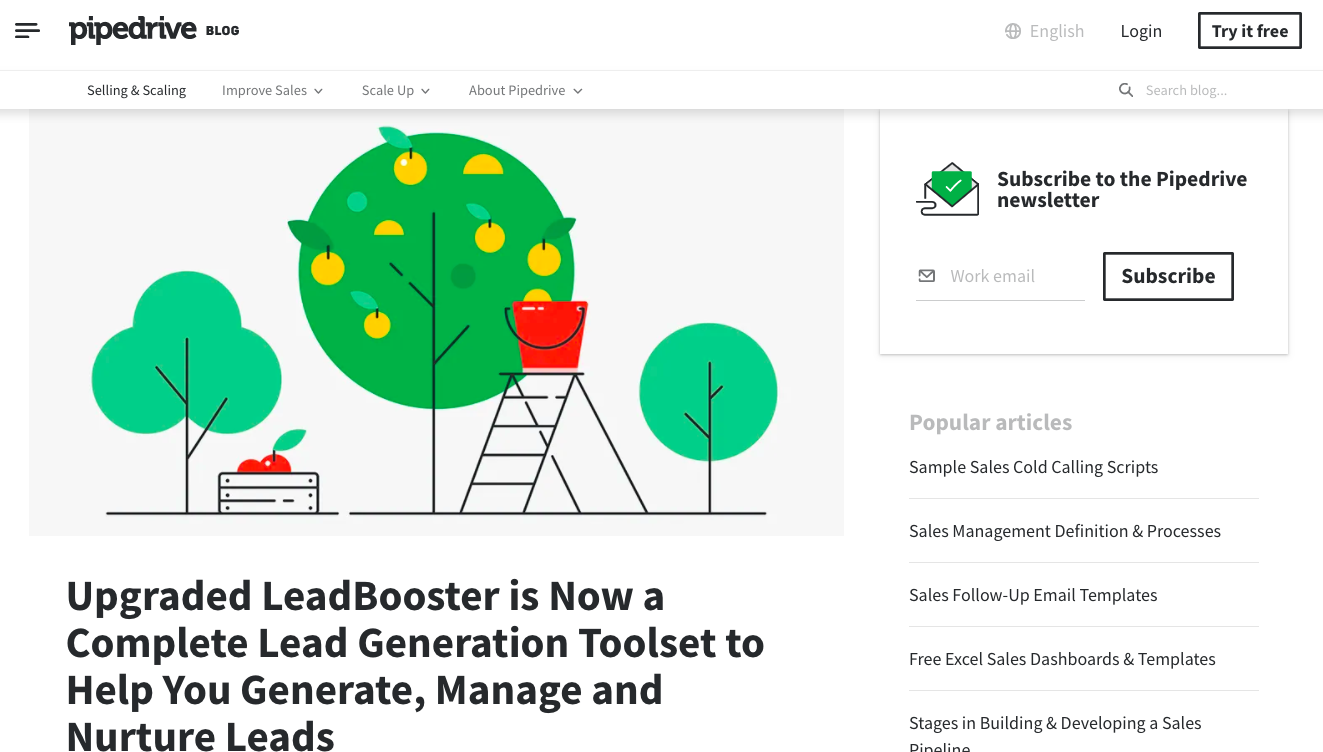

No comments:
Post a Comment